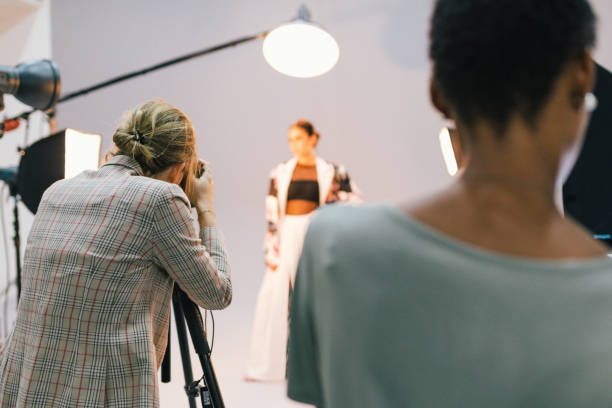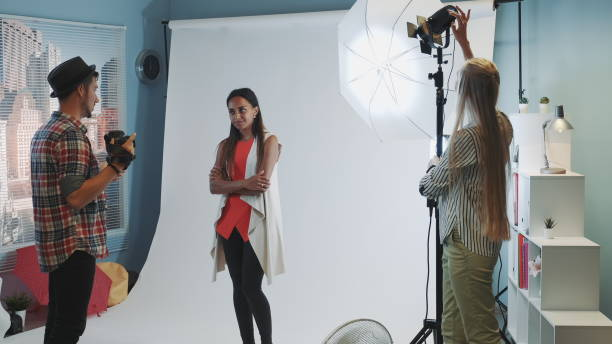How to Become a Fashion Photographer
In the visually driven world of style, fashion photographers are the unsung heroes who bring the designer’s vision to life. These professionals possess an eye for beauty, a command of capturing the essence of fabrics and textures, and a talent for storytelling through imagery. The main topic of this article is the path to becoming one of these coveted professionals in the fashion industry. Successful fashion photographers must have more than just a good camera; they need an in-depth understanding of the industry, creativity, technical skills, and the capacity to network effectively. The journey to a successful career in fashion photography is as challenging as it is rewarding, and getting started requires dedication to the craft as well as strategic career planning.

Understanding the World of Fashion Photography
Fashion photography is more than simply taking photographs; it encompasses an entire industry devoted to showcasing and selling fashions. Aspiring fashion photographers might also understand that they have to do more than capture beautiful images; they also need to convey a message or mood that resonates with the viewers. Throughout history, the most iconic fashion photographs were shot by those who not only had technical expertise but could also tell a story with their images. From exclusive fashion magazines to advertising campaigns, great fashion photographers must also bridge the gap between art and commerce.
The Role of a Fashion Photographer
A fashion photographer, often working with other professionals, must create and communicate the narrative behind a brand or a piece of clothing. These narratives are crucial for fashion magazines and designers who rely on the compelling visuals to sell their goods. As a fashion photographer, one must also balance the artistic elements with the expectations of clients, and understand how different environments, lighting, and models can impact the final product. Moreover, photographers must be adept at photo shoots ranging from studio work to exotic locations.
Educational Pathways and Skill Development
Formal Education vs. Self-Taught Skills
There are different pathways one can take to master the craft of fashion photography. Some choose the structure and network opportunities provided by formal education, such as a degree or photography courses. Others find success in being self-taught through practice, online resources, and personal experimentation. Both avenues have their benefits; a successful career can be had with or without a photography degree, as long as one is persistent and continually improving their skills.
Mastering the Technical Skills
Regardless of the educational path chosen, all aspiring fashion photographers must have a deep understanding of the technical aspects of photography. This includes knowing the ins and outs of camera settings, lighting techniques, and post-processing software. Mastering these technical skills is crucial for creating high-quality, stunning images that could become the talking point of prominent fashion magazines.
Building a Portfolio
A professional portfolio is essential for any photographer, but it also holds true for those in fashion. Your portfolio should contain a carefully curated selection of your best work, representing your personal style and the types of assignments you aspire to. Here, diversity in your photos can speak volumes about your versatility and adaptability to various fashion genres.
Key points to consider when building a portfolio:
- Variety reflects your ability to handle different photography styles and demands.
- Consistency shows your distinctive style and professional approach.

Gaining Experience in the Fashion Industry
Building relationships within the fashion industry is as crucial as honing your skills behind the camera. Internships and assistant positions provide invaluable experience and opportunities to learn from established professionals. Networking through such roles could also open doors to future photo shoots, contacts with model agencies, and potential job offers.
Fashion photography often requires collaboration with models, stylists, and makeup artists. Personal projects are a good way to hone your craft while building a network of collaborators. Not only do these projects allow for creative freedom, but they also lead to building a body of work that showcases your ability to execute a vision from conceptualization to final photograph.
The Business Aspect of Fashion Photography
Marketing Yourself
As you develop your technical prowess and distinctive style, you also need to learn to market yourself. In the digital age, an online presence can significantly improve your visibility. Utilizing social media platforms, engaging with online communities, and maintaining an up-to-date website are key practices for marketing your brand.
Managing Your Business
Fashion photography is not just about creativity; it’s also a business. Essential to a successful career are aspects such as setting competitive rates, understanding copyright laws, and effective invoicing. These points might not be as glamorous as the photoshoots but are vital for running a profitable business.
| Business Aspect | Why It’s Important |
|---|---|
| Branding | Establishes your unique presence in a competitive industry. |
| Networking | Creates opportunities for collaborations and potential clients. |
| Financial Management | Ensures you price your services correctly and sustain profitability. |
These business aspects will sustain you in the long run and are just as crucial as the creative side of photography.

Conclusion
Fashion photography is a challenging yet fulfilling profession that combines creativity with technical know-how. The path to becoming a fashion photographer involves dedication to learning, constant improvement, and strategic networking. Remember, successful fashion photographers were once beginners, too. With passion and persistence, your journey can lead you to become the next influential figure behind the lens in the dazzling world of high fashion.
Frequently Asked Questions
Q1: Do I need expensive equipment to start out in fashion photography?
A1: While high-quality equipment can enhance your work, it’s not a necessity for beginners. Focus on understanding lighting and composition, and use the best equipment within your budget. As you grow, you can invest in better gear.
Q2: How important are networking and industry connections in fashion photography?
A2: Networking is crucial in the fashion industry. Strong relationships can lead to more opportunities for assignments, collaborations, and exposure to different facets of the industry.
Q3: Can I build a career in fashion photography without a formal education?
A3: Yes, many successful fashion photographers are self-taught. However, a formal education provides structured learning and networking opportunities, which can be beneficial.
Q4: What’s the best way to approach a potential mentor or photographer to assist?
A4: Research their work extensively, and reach out with a personalized message expressing your admiration for their work and your desire to learn. Be professional, courteous, and clear about what you can offer in return.
Q5: How important is social media for a fashion photographer?
A5: Social media is a powerful tool for showcasing your work, connecting with a global audience, and engaging directly with brands and potential clients. It can significantly enhance your visibility and business opportunities.
